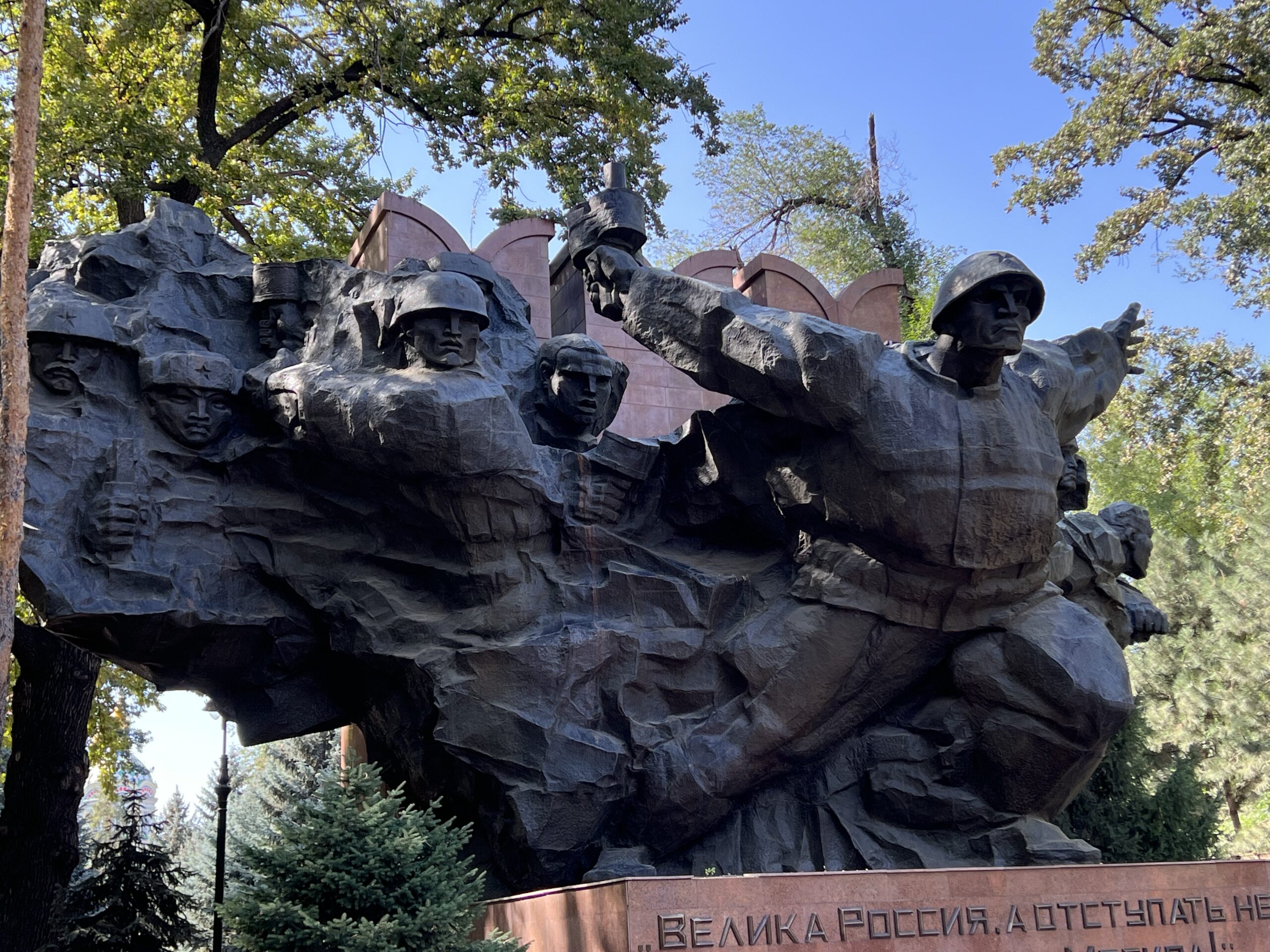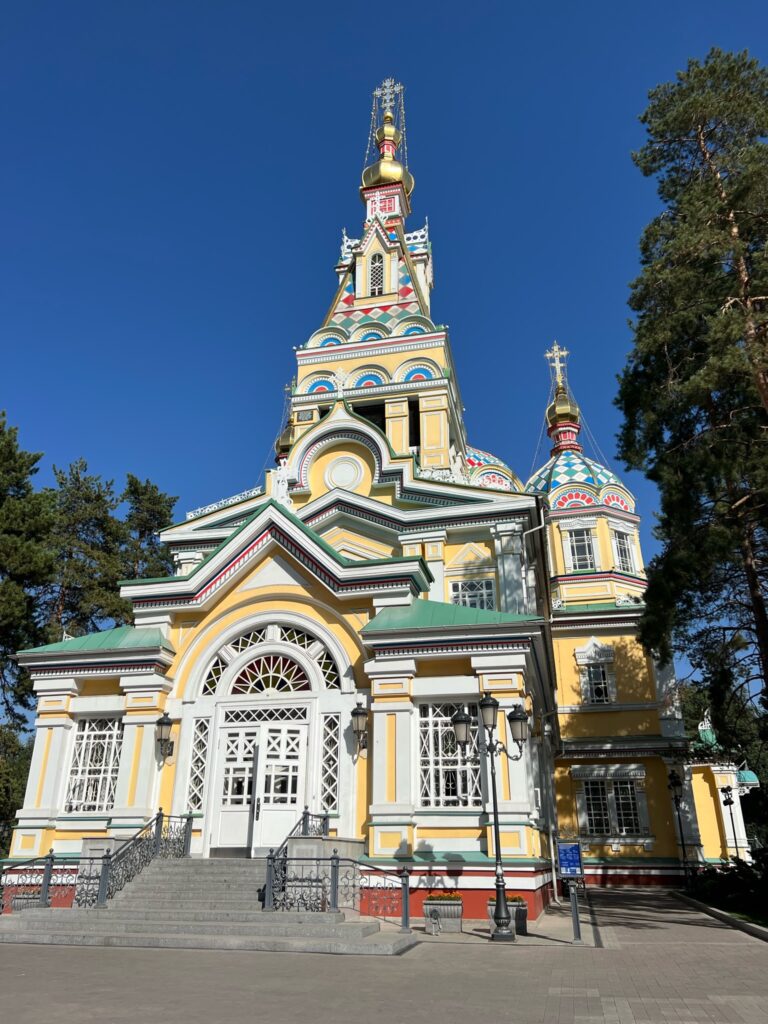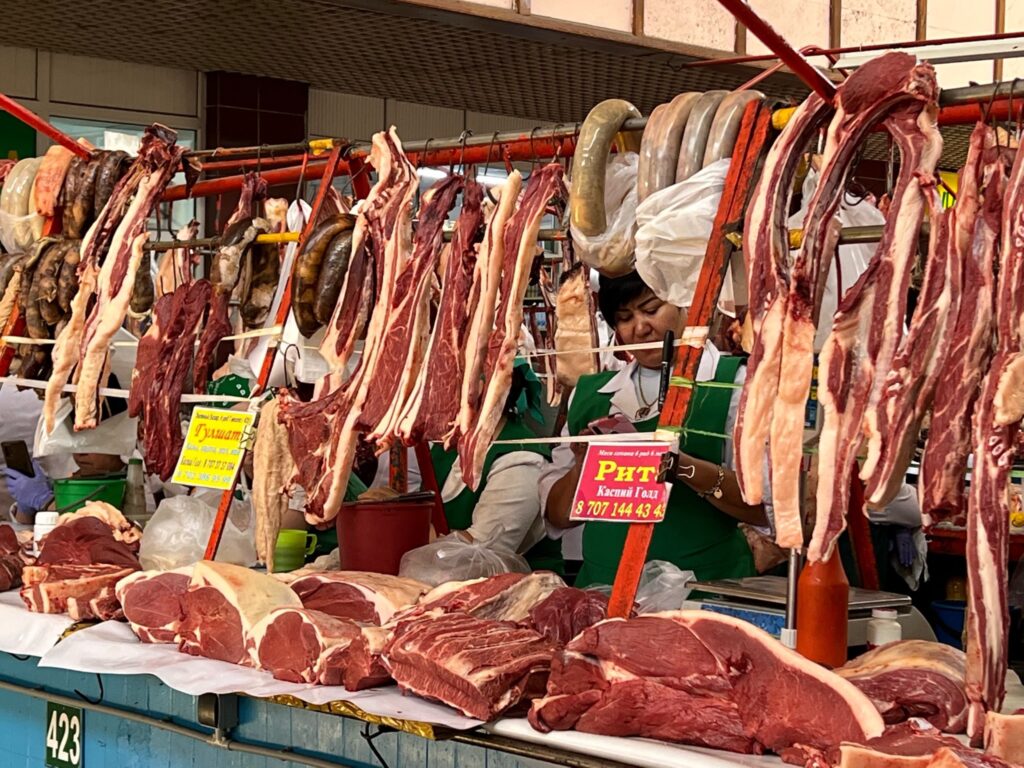14 September 2022
Almaty – what used to be the capital of Kazakhstan before it picked up its skirts and moved 750 miles north to Nur-Sultan, the second coldest capital city in the world. I walk on the steppes of Central Asia.
I am inexplicably drawn to the 14 old republics of the late U.S.S.R. and other countries of the Balkans and Eastern Europe. In most part, having lived under the boot of Soviets and Communism for decades, these countries, as a result of pride, determination and unity, created the Velvet, Gentle, Orange, and Singing revolutions. They were extraordinarily non-violent but achieved their aim – independence.
I find each country’s history, independence and post-Soviet development fascinating. I have visited 6 of the 15 republics of the USSR and on this adventure I will learn about 4 more.
Arriving into Almaty, I am amazed how cosmopolitan the city is. The airport, metro, hotels and restaurants are modern and lively. Temperatures are warm during the day and cool at night and I can see snow on some of the highest peaks. Area mountains host ski slopes and resorts. This is pretty surprising for a country I thought as arid, flat desert. I am told the cities, though over vast distances, are connected by railways. Sharing a border and history with Russia, one can’t miss their influence, beginning with the ubiquitous use of the Cyrillic alphabet.
What has brought me to the steppes of Kazakhstan? These are just a few things…

Park of 28 Panfilov Guardsmen is just a short block from my hotel. I love parks, museums, cathedrals and memorials. Panfilov has it all. It is named for the heroic 28 soldiers of an Almaty infantry unit who died while fighting the Germans outside of Moscow during World War Two, or the Great Patriotic War as it is known on the Eastern Front. Ivan Panfilov, the General commanding this 316th division, is credited with significantly delaying the German advance into Moscow.
In front of the massive war memorial is the Eternal Flame commemorating the fallen soldiers of WW2.
Trees and grounds are immaculate. Fall colors are just beginning. Other monuments and memorials are those dedicated to General Panfilov, Memorial Slavy to the guardsmen, to Bauyrzhan Momyshuly a Kazakh-Soviet military officer and People’s Hero of Kazakhstan, a statue of Tokash Bokin who was an active leader in the Kazakhs’ national liberation movement in 1916, and a more recent monument to the Afghan War.
Also, the interesting aryks are everywhere in the city. These are clever irrigation ditches or gutters that when full, yes it does rain here, moves the water along and prevents flooding. They also are perforated with holes so to water the nearby trees. The Kazakhs are very proud of their “green city” which otherwise would be brown dirt and rocks. The water begins as the snow melts in the nearby mountains, streams down its rivers and is directed along the aryks. It is an ingenious method of dealing with water and flooding, considering the city’s location beneath towering mountains ladened with snow in winter. A second device meant to save the city are immense cross-beamed fences situated to stop the snow and rock avalanches from entering the city.

Dominating the center of the park is Zenkov Cathedral (Ascension Cathedral). This wooden Russian Orthodox cathedral has survived war, revolution, and termites since its consecration in 1907. Rising to 183 feet, it is claimed to be the second tallest wooden building in the world (Mjøsa Tower near Oslo is #1). This structure is entirely of wood and built without the use of nails! The church even withstood the 7.7 Chon-Kemin earthquake which pretty much destroyed most of Almaty in 1911. A gorgeous iconostasis survived the Soviets who used the cathedral for public organizations. The first radio transmitters were placed in its belfry. After the Soviets left, the church was restored to its original purpose.

If one has the stamina left to see more, and we do, a stroll of the Green Bazaar is the place to go for endless stalls selling everything and anything one could want in life. Spices, vegetables, cheeses, pickled everything, nuts, flowers, gargantuan slabs of meat, and racks of horse meat. Clothing, hardware, electronics, lighting and more are found. Sellers, especially the men, were friendly and insisted Gabrielle should taste their specialties. One probably could just wander and dine this way but the expectation is that you buy something. With not a tenge in our pocket, we thought it best to limit our sampling.
A final stop was the quiet of the Central Mosque. Not as ornate as many I have seen, it is also the first where women had a separate entrance and prayer room. Some kind ladies prevented us from creating an international scene when we approached the wrong entrance.
It is time we returned to our hotel to relax. We meet our tour group tonight. And it is time to sample a local Karagandinskoye beer. Little I know how hard alcohol is to come by.
0 Comments